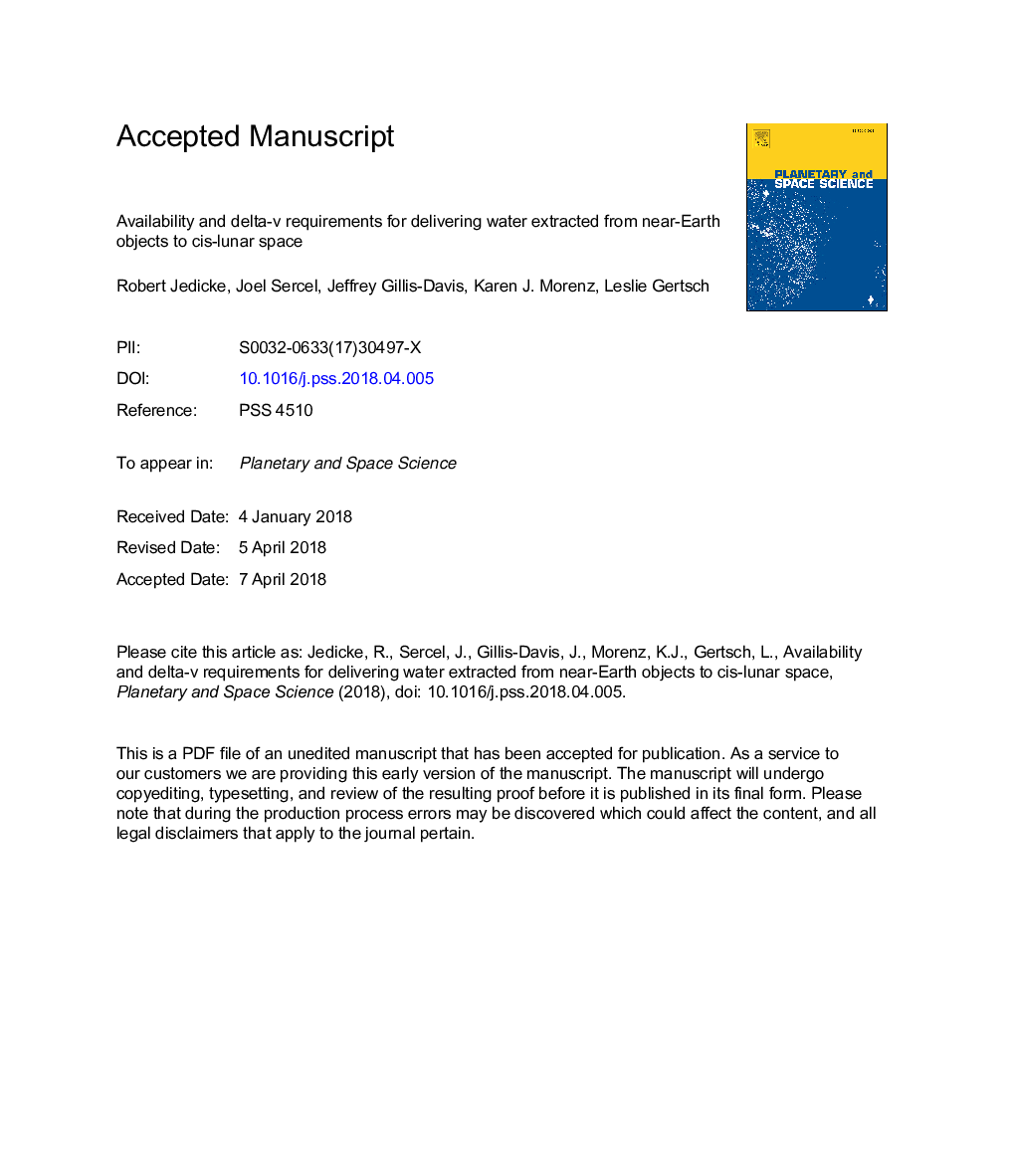| کد مقاله | کد نشریه | سال انتشار | مقاله انگلیسی | نسخه تمام متن |
|---|---|---|---|---|
| 8142033 | 1523881 | 2018 | 35 صفحه PDF | دانلود رایگان |
عنوان انگلیسی مقاله ISI
Availability and delta-v requirements for delivering water extracted from near-Earth objects to cis-lunar space
دانلود مقاله + سفارش ترجمه
دانلود مقاله ISI انگلیسی
رایگان برای ایرانیان
موضوعات مرتبط
مهندسی و علوم پایه
علوم زمین و سیارات
فیزیک زمین (ژئو فیزیک)
پیش نمایش صفحه اول مقاله

چکیده انگلیسی
We have calculated the number of water-bearing near-Earth objects as a function of return-trip delta-v (ÎvRT). First, we combined a model of the near-Earth object's (NEO) orbit and size-frequency distribution with other measurements of their provenance, and the taxonomic distribution of asteroids in the NEO's main belt sources, to calculate the taxonomic distribution of NEOs as a function of their orbital elements and size. Our calculations are in agreement with recent measurements of the ratio of C- and S-complex bodies within the population of small NEOs. Then we developed a simplified mission model to calculate an upper limit on ÎvRT for a mission from an NEO to distant retrograde lunar orbit (DRLO) in cis-lunar space. Combining the first two steps allowed us to develop a synthetic population of low ÎvRT NEOs that includes their taxonomic distribution. Finally, we used measurements of the water-bearing content of the taxonomic classes based on their assumed meteorite associations to calculate the number of water-bearing NEOs as a function of ÎvRT. We find that there are likely thousands of H2O-rich NEOs larger than about 5â¯m diameter with ÎvRTâ²3kmsâ1 and the number of objects increases as ÎvRT3. The rapid increase in the number of objects with ÎvRT suggests that in-situ resource utilization (ISRU) of asteroid-derived water can expand quickly throughout the solar system. NEOs with ÎvRTâ²3kmsâ1 tend to be on Earth-like orbits with semi-major axes aâ¼1au, eccentricities eâ³0, and inclinations iâ³0â. The small, dark, low ÎvRT NEOs are difficult or impossible to detect with Earth-based telescopes because many orbit the Sun interior to Earth's orbit and others have such long synodic periods that they are rarely visible.
ناشر
Database: Elsevier - ScienceDirect (ساینس دایرکت)
Journal: Planetary and Space Science - Volume 159, 15 September 2018, Pages 28-42
Journal: Planetary and Space Science - Volume 159, 15 September 2018, Pages 28-42
نویسندگان
Robert Jedicke, Joel Sercel, Jeffrey Gillis-Davis, Karen J. Morenz, Leslie Gertsch,